The Bengal cat is an exotic and striking feline breed known for its unique characteristics and playful nature. Originating in the United States in the 1960s, Bengal cats have captivated the hearts of cat enthusiasts worldwide with their stunning wild-like markings and vibrant colors.
Bengal cats are a result of crossing a domestic tabby with a wild Asian Leopard Cat, resulting in their distinctive rosetted or marbled coat patterns. These exquisite cats are highly energetic and known for their curious nature and strong attachment to humans.
In the Philippines, Bengal cat breeders have gained popularity for offering these magnificent and hypoallergenic cats to individuals and families seeking a truly unique feline companion. If you’re considering adopting a Bengal cat, it’s essential to understand their characteristics, history, care needs, and more.
Throughout this Bengal Cat Guide, we’ll provide comprehensive information about Bengal cats, including their breed traits, history, physical characteristics, adoption process, care guidelines, communication patterns, lifespan, and growth stages.
Key Takeaways:
- Bengal cats are an exotic and playful feline breed with unique coat patterns.
- They originated in the United States and have gained popularity worldwide.
- Bengal cats are highly energetic, curious, and form strong bonds with humans.
- In the Philippines, Bengal cat breeders offer these hypoallergenic cats to interested individuals.
- Throughout this guide, we’ll cover Bengal cat characteristics, history, care, and more.
Bengal Cat Characteristics and Traits
Bengal cats are an exotic and unique breed known for their mesmerizing coat patterns and energetic nature. These playful felines possess distinctive traits that set them apart from other cat breeds.
Distinct Coat Patterns
Bengal cats boast a wide range of coat patterns, including rosetted, marbled, and spotted. Their coats feature intricate markings with contrasting colors, resembling the patterns found in their wild ancestor, the Asian Leopard Cat.
Sleek and Athletic Body
Bengal cats have a sleek and muscular physique that reflects their energetic nature. They are agile and graceful, with a strong build that allows them to engage in various physical activities. Their wide-based ears and small, triangular head contribute to their exotic appearance.
High Energy and Curiosity
One of the defining characteristics of Bengal cats is their boundless energy and curiosity. These felines thrive on mental and physical stimulation, constantly seeking new experiences and challenges. Keeping them entertained with toys, interactive play, and environmental enrichment is essential to their well-being.
Affectionate and Bonded
Despite their wild-like appearance, Bengal cats are highly affectionate and form deep bonds with their human companions. They enjoy being part of the family and often exhibit dog-like behaviors, such as following their owners around the house and eagerly participating in activities.
Overall, Bengal cats combine the exotic allure of an exotic cat breed with their unique coat patterns and playful nature. Their energetic disposition and strong attachment to their human companions make them one of the most captivating additions to any household.
Bengal Cat History
The Bengal cat breed has an intriguing history that dates back to the 1960s. It all began with Jean Mill, an enthusiastic cat breeder from Arizona who had a vision of creating a feline companion that possessed both the exotic appearance of the Asian leopard cat and the gentle temperament of a domestic cat.
In order to achieve this, Mill meticulously crossbred a domestic tabby with an Asian leopard cat, resulting in the development of the Bengal breed. This unique combination of wild and domestic genes gave rise to Bengal cats’ distinctively beautiful coat patterns and captivating features.
The initial breeding efforts took place in the 1960s, but it was not until later on that the breed was further refined and developed at the University of California, Davis. Researchers at the university played a significant role in enhancing the Bengal breed’s characteristics and ensuring its viability.
The International Cat Association (TICA) recognized the Bengal breed in 1983, and it was granted full status in 1991. Since then, Bengal cats have gained worldwide admiration for their exceptional beauty, remarkable athleticism, and engaging personalities.
Today, Bengal cats are cherished companions known for their striking appearance, playful nature, and strong bonds with their human families. The breed’s origin story serves as a testament to the ingenuity and dedication of breeders like Jean Mill, who worked tirelessly to create a truly unique and captivating breed.
Bengal Cat Physical Characteristics
Bengal cats boast a unique and captivating appearance that sets them apart from other feline breeds. They possess distinct physical characteristics that contribute to their overall charm and allure.
Muscular Body:
Bengal cats have a sleek and muscular body that reflects their athletic nature. Their strong physique allows them to display remarkable agility and grace in their movements.
Tail:
Bengal cats sport a thick tail that gradually tapers to a rounded end. This tail adds to their overall balance and agility, enhancing their remarkable athletic abilities.
Coat:
The coat of a Bengal cat can showcase various patterns, including rosetted, marbled, or spotted. These patterns come in different colors, creating a visually striking and captivating appearance. Bengal cats are often recognized for their beautiful coat patterns, making them truly stand out amongst other feline breeds.
Ears and Head:
Bengal cats possess wide-based ears that contribute to their distinctive look. Their small, triangular head further enhances their overall aesthetic appeal, giving them a unique and captivating appearance.
Eyes:
The almond-shaped eyes of Bengal cats are mesmerizing and expressive. Their eyes can vary in color, ranging from green, gold, or hazel. The combination of their striking eyes and distinct coat patterns adds to their overall beauty and charm.
In summary, Bengal cats are renowned for their stunning physical characteristics. From their sleek and muscular body to their captivating coat patterns, these felines possess a natural allure that captivates cat enthusiasts worldwide.
Bengal Cat Adoption and Pricing
When considering adopting a Bengal cat, it is important to find a reputable and ethical breeder. Bengal cats can be quite expensive, with prices ranging from $1,500 to $3,000 (USD) on average. The price can vary depending on factors such as the kitten’s traits, including generation, quality, age, and demand. It is important to choose a breeder who prioritizes the health and well-being of the cats and kittens. A good breeder will provide necessary vaccinations, health guarantees, and ongoing support.
If you are planning to bring home a Bengal cat, taking the time to research and find a trustworthy breeder is crucial. It ensures that you are supporting a responsible breeder who prioritizes the well-being of the cats. Ethical breeders follow proper breeding practices, provide excellent care for their cats and kittens, and prioritize the health and temperament of their animals.
The price of a Bengal cat can vary depending on several factors. One of the main factors is the kitten’s traits, including its generation and quality. Bengal cats are classified into different generations, which indicate the number of generations they are removed from their wild ancestors. Higher generations are typically less expensive compared to lower generations.
The quality of the Bengal cat, including its coat pattern and coloration, can also influence the price. Cats with highly desirable coat patterns and colors are often priced higher. Additionally, the age of the cat can also affect the price, as younger kittens tend to be more expensive.
Market demand also plays a role in Bengal cat pricing. If Bengal cats are in high demand, breeders may increase their prices. Conversely, if there is lower demand, prices may be more affordable.
When adopting a Bengal cat, it is essential to consider the breeder’s reputation and their commitment to the cats’ well-being. Ethical breeders prioritize the health and temperament of their cats, providing necessary vaccinations, veterinary care, and health guarantees. They also offer ongoing support and guidance for new Bengal cat owners.
Adopting a Bengal cat is a commitment, both financially and emotionally. While the initial cost may be higher, the joy and companionship a Bengal cat can bring to your life are priceless. Ensure you choose a breeder who follows ethical practices and cares for their cats’ welfare, giving you peace of mind as you welcome a new member into your family.
Image:
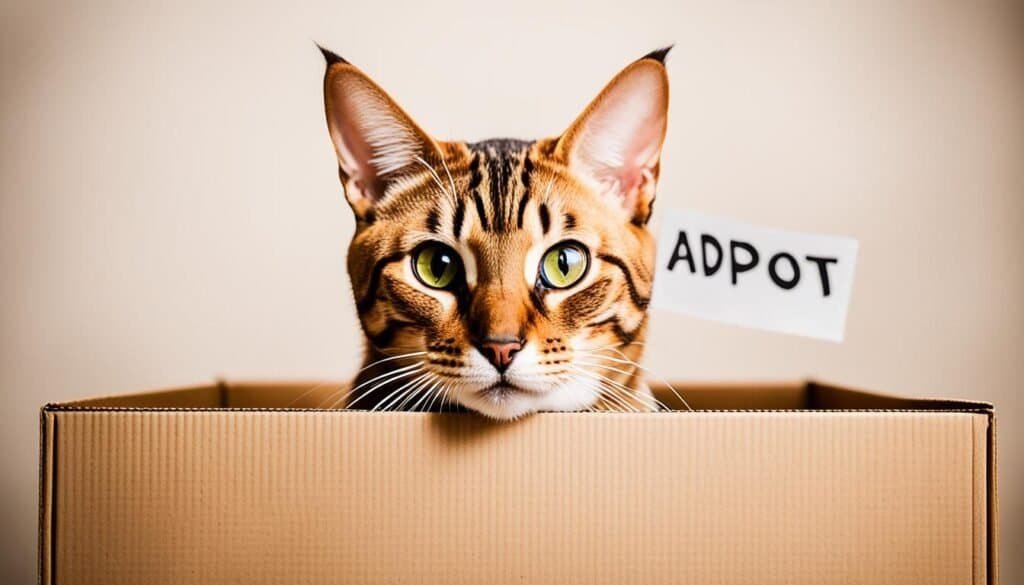
Choosing the Right Bengal Cat
When choosing a Bengal cat, there are several factors to consider in order to find the perfect fit for your lifestyle and preferences. It is important to take into account their temperament, energy level, compatibility with other pets, and grooming needs. Bengal cats are highly energetic and require plenty of mental and physical stimulation to thrive.
Temperament and Energy Level
Bengal cats have a playful and active nature. They are known to be affectionate and form strong bonds with their human companions. Their energetic nature makes them enthusiastic participants in playtime activities. Providing them with plenty of toys and interactive games can help keep them mentally stimulated and prevent boredom.
Compatibility with Other Pets
If you have other pets at home, it is important to consider the compatibility of a Bengal cat with them. While Bengal cats can get along well with other cats and dogs, proper introductions and gradual introductions are necessary for a harmonious coexistence. Early socialization and positive reinforcement can help ensure a smooth integration of a Bengal cat into a multi-pet household.
Grooming Needs
Bengal cats have relatively low grooming needs compared to some other long-haired cat breeds. Their short and dense coat requires minimal brushing to maintain its healthy condition. Regular brushing can help reduce shedding and keep their coat looking glossy. Occasional nail trims and dental care are also important aspects of Bengal cat grooming.
Remember to consider these factors when choosing a Bengal cat and ensure that their temperament, energy level, compatibility, and grooming needs align with your lifestyle. A well-informed decision will help in establishing a strong bond and a rewarding companionship with your Bengal cat.
Bengal Cat Care and Health
Bengal cats require specific care to ensure their overall health and well-being. Proper grooming, a balanced diet, regular veterinary check-ups, and mental stimulation are essential for their optimal care.
Grooming
Grooming plays a crucial role in maintaining the coat of Bengal cats. Regular brushing helps remove loose hair, prevent matting, and promote a healthy and shiny coat. It is recommended to use a soft-bristled brush or a grooming glove to gently remove any tangles or debris. Pay special attention to their coat during shedding seasons, as Bengal cats tend to shed moderately.
Dietary Needs
Providing Bengal cats with a high-quality diet is vital for their overall health and vitality. Their diet should consist of a balanced combination of protein, fats, and carbohydrates. Opt for commercially available cat foods that meet the specific nutritional requirements of Bengal cats. Avoid feeding them human food, as certain ingredients can be harmful to their digestive system. Remember to provide fresh and clean water at all times.
Veterinary Care
Regular veterinary check-ups are essential to monitor the health of Bengal cats. Veterinary visits allow for vaccinations, deworming, and preventive care against common cat illnesses. Schedule annual wellness exams to ensure early detection of any potential health issues. Follow your veterinarian’s advice on vaccination schedules and other necessary preventive treatments.
Dental Care
Dental health is vital for Bengal cats, as dental issues can lead to discomfort and affect their overall health. Regular teeth brushing using cat-specific toothpaste and toothbrush helps prevent dental plaque and tartar buildup. Provide dental treats or toys designed to promote healthy chewing and dental hygiene.
Mental and Physical Stimulation
Bengal cats are highly energetic and intelligent, requiring both mental and physical stimulation to prevent boredom and destructive behavior. Engage them in interactive play sessions using toys that promote their natural hunting instincts. Provide scratching posts, climbing trees, and perches to keep them physically active and mentally stimulated.
Overall, Bengal cats thrive with attentive care and specific attention to their grooming, diet, veterinary care, and stimulation needs. By understanding and meeting these requirements, you can provide them with a happy, healthy, and fulfilling life.
Bengal Cat Communication and Behavior
Bengal cats have unique ways of communication and behavior that distinguish them from other breeds. They exhibit various behaviors to express their needs, emotions, and establish connections with their owners.
One common behavior is face rubbing, where Bengal cats rub their face against objects or people. This behavior is known as bunting and serves multiple purposes. Firstly, it helps them mark their scent and territory, indicating ownership and familiarity. Secondly, it is a way for them to show affection and establish social bonds. Face rubbing is a positive and endearing behavior that Bengal cat owners often find delightful.
Bengal cats also use vocalizations to communicate with their owners, although their vocal tendencies are generally low. They may meow, chirp, purr, or trill to convey various messages. Each Bengal cat has its own unique vocal language, allowing them to express their desires, emotions, and needs. It is essential for owners to pay attention to their cat’s vocalizations and learn to interpret them to meet their needs effectively.
“Understanding your Bengal cat’s behavior and vocalizations can strengthen the bond between you and your feline companion.”
To further understand Bengal cat behavior, it can be helpful to observe their body language. A cat’s tail position, ear movement, and overall posture can provide valuable insight into their mood and intentions. For example, a relaxed and slightly flicking tail usually signifies contentment, while an elevated, puffed-up tail may indicate fear or agitation. By paying attention to these cues, owners can better understand their Bengal cat’s emotions and provide appropriate care and attention.
Additionally, Bengal cats are known for their active and curious nature. They thrive on mental and physical stimulation. Engaging in interactive play, providing puzzle toys, and creating vertical spaces for climbing can help satisfy their need for exploration and exercise. This not only keeps them physically healthy but also prevents boredom, which can lead to destructive behaviors.
Bengal Cat Behaviors and Their Meanings
| Behavior | Meaning |
|---|---|
| Face rubbing (bunting) | Ownership, familiarity, affection |
| Vocalizations (meowing, chirping, purring, trilling) | Expressing needs, desires, emotions |
| Tail position and movement | Indication of mood and intentions |
| Curiosity and playfulness | Need for mental and physical stimulation |
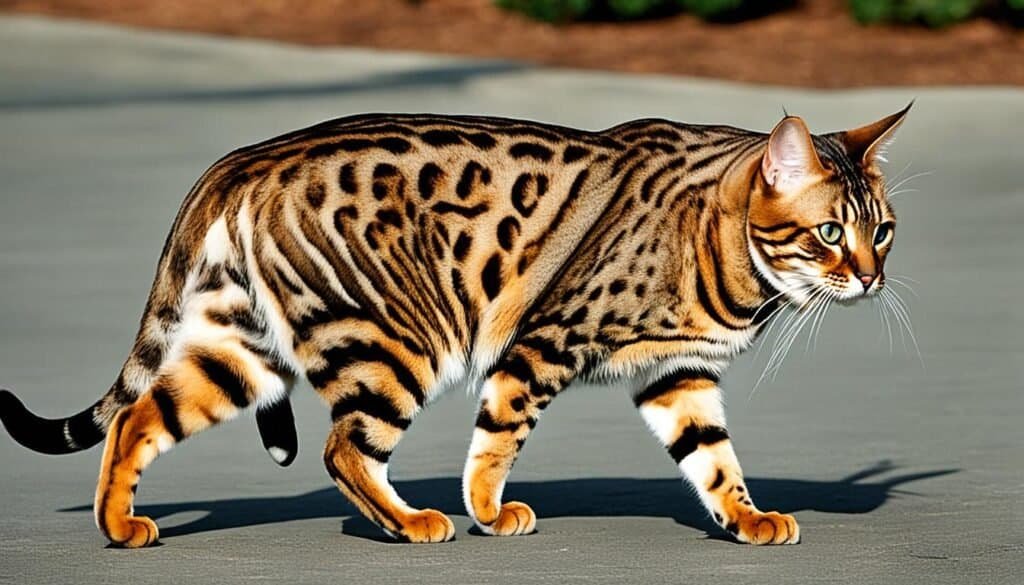
Bengal cats’ communication and behavior are fascinating aspects of their personality. Understanding and interpreting their behaviors can strengthen the bond between owners and these beautiful feline companions.
Bengal Cat Lifespan and Growth Stages
Bengal cats are known to have an average lifespan of around 12 to 16 years. However, with proper care and attention, some Bengal cats have been known to live even longer.
Growth Stages
Bengal cats go through different growth stages as they age, each with its own unique characteristics and developmental milestones. These stages include:
- Baby Cat Stage (0-4 months): During this stage, Bengal kittens are still dependent on their mother and are learning important social and behavioral skills. They are curious, playful, and rapidly growing.
- Growing Kitten Stage (4-12 months): Bengal kittens continue to grow and develop their physical and cognitive abilities. They may become more independent and assertive during this stage.
- Adult Stage (1-7 years): Bengal cats reach their full size and physical maturity during this stage. They are active, energetic, and may still display some kitten-like behaviors.
- Mature Stage (7-12 years): Bengals in this stage are considered to be in their prime. They are still playful but may start to slow down and show signs of aging.
- Senior Stage (12 years and above): Bengal cats in their senior stage require extra care and attention. They may have specific health needs and could benefit from a more relaxed environment.
It’s important to provide appropriate care, nutrition, and veterinary support for Bengal cats at each stage of their life. Regular check-ups, vaccinations, and a balanced diet can help ensure their overall health and well-being as they age.
To learn more about the various growth stages of Bengal cats, refer to the table below:
| Stage | Description |
|---|---|
| Baby Cat Stage (0-4 months) | Bengal kittens are dependent on their mother, curious, playful, and rapidly growing. |
| Growing Kitten Stage (4-12 months) | Bengal kittens continue to grow and develop their physical and cognitive abilities. |
| Adult Stage (1-7 years) | Bengal cats reach their full size and physical maturity. |
| Mature Stage (7-12 years) | Bengals are in their prime, active, and playful. |
| Senior Stage (12 years and above) | Bengal cats in their senior stage require extra care and attention. |
Conclusion
Bengal cats are truly special companions for those looking for a unique and exotic feline friend. With their striking appearance and playful personality, they bring a touch of the wild into your home. If you are considering adopting a Bengal cat, it’s essential to arm yourself with the right knowledge and understanding. Research reputable breeders and gain insight into their specific care needs.
By providing the proper care, love, and attention, Bengal cats can become cherished members of your family, bringing joy and companionship to your life. Remember to offer them plenty of mental and physical stimulation to keep them happy and healthy. With their energetic nature and affectionate temperament, Bengal cats are sure to leave a lasting impression on your heart.
So, whether you’re captivated by their unique appearance or drawn to their lively personality, embrace the adventure of Bengal cat ownership. Make informed decisions, invest in their care, and enjoy the remarkable journey of sharing your life with this extraordinary breed.
FAQ
How do I choose the right Bengal cat?
What care do Bengal cats require?
How do Bengal cats communicate?
What is the lifespan of Bengal cats?
How do I choose the right Bengal cat?
What care do Bengal cats require?
How do Bengal cats communicate?
What is the lifespan of Bengal cats?
Last modified: March 4, 2024

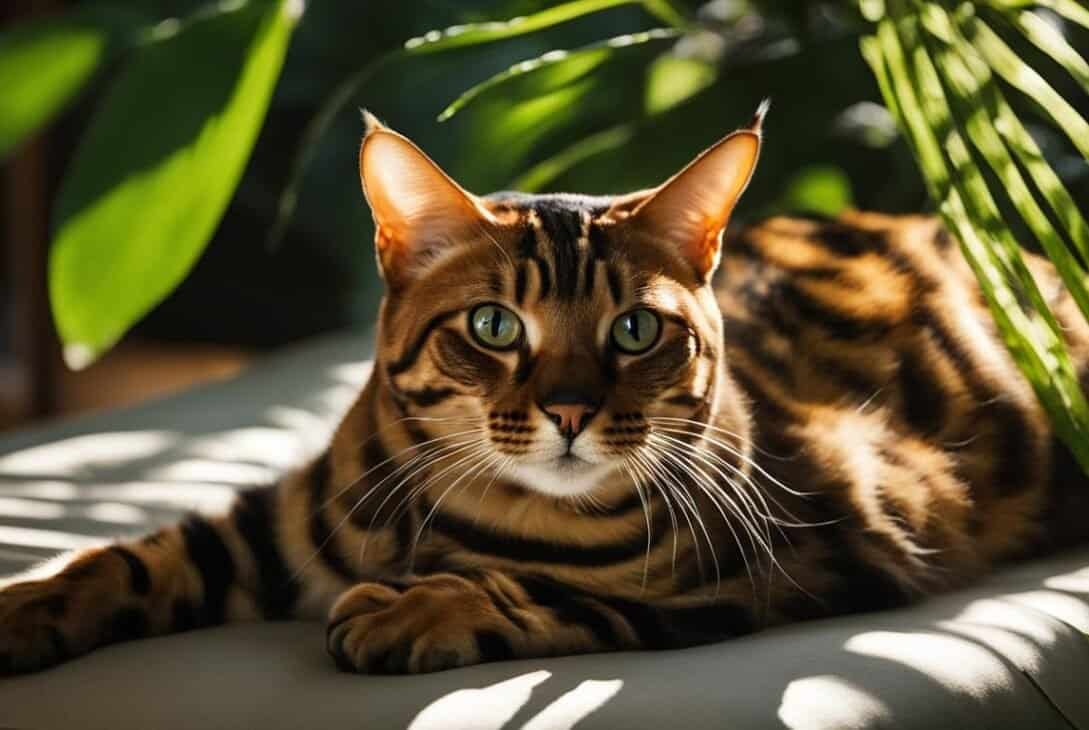
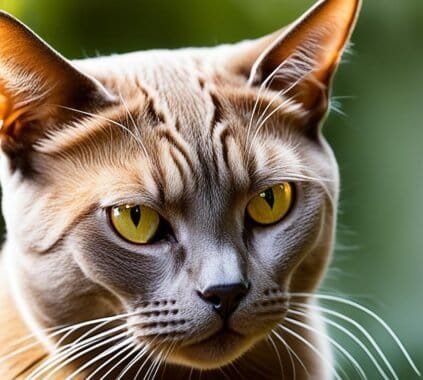
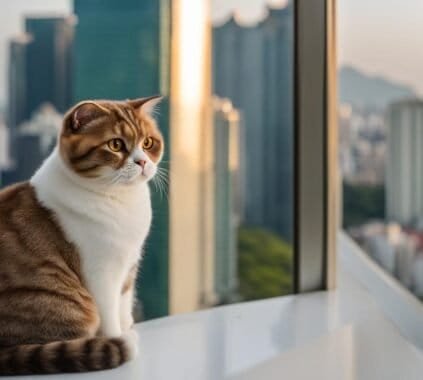
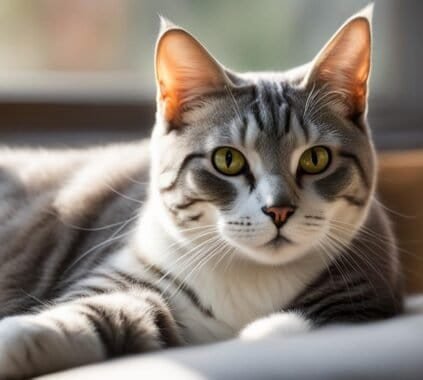
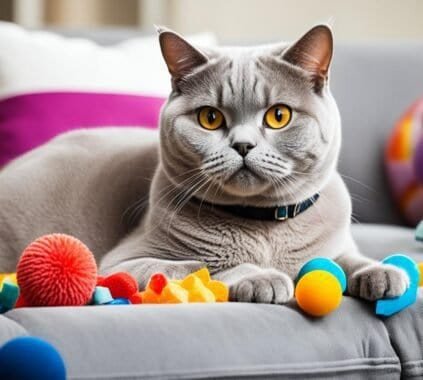








[…] blue eyes. Although not all Ragdolls have blue eyes, these captivating blue orbs are a common trait among many cats of this breed. The beautiful contrast of their eye color against their fur adds to their overall […]
[…] in Tagaytay. These medium to large cats require regular exercise and mental stimulation. Owning a Bengal cat can add excitement and energy to the serene surroundings of […]